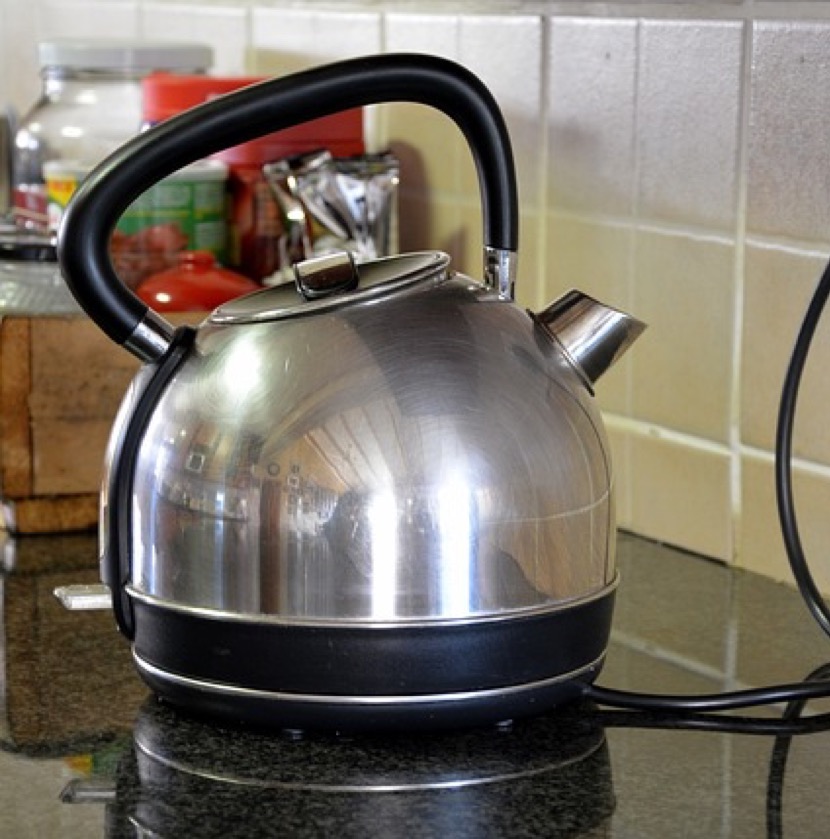Boiling water doesn’t remove its mineral content, and if you don’t clean it regularly, your kettle can accumulate significant grime.
If you’ve become accustomed to the rapid and efficient performance of an electric kettle, the process of waiting for water to boil on the stove may seem exceptionally slow. For those who have dedicated valuable counter space to this essentially single-use appliance, it likely serves various purposes, from preparing hot beverages to boiling water for stovetop cooking, and even making quick meals like instant oatmeal or noodles.
Your electric kettle, a kitchen workhorse, may accumulate grime, especially if you have hard water. Unlike what you might think, electric kettles don’t clean themselves. The good news? Deep-cleaning your electric kettle is surprisingly simple. Let me show you how.
Clean an electric kettle with citric acid
Deep-cleaning an electric kettle can be done in various ways, and from my experience, the citric acid method stands out as the most effective with minimal effort. It’s crucial to remember that although the kettle’s insides are designed to interact with water, its electric components, typically the bottom or a side component, should never be submerged or exposed to water.
Begin by examining the interior of the kettle to assess the stains and mineral deposits. Take note of the areas that require cleaning. Here’s a snapshot of the inside of mine before the cleaning process:
I’ve encountered far more severe cases—such as limescale forming barnacle-like structures on the heating element and spout interior. However, there are some mineral deposits on the filter, and rust-colored stains from the water on the bottom.
Now, let’s actually get started cleaning it.

Fill your kettle roughly halfway with water, then add two small scoops of powdered citric acid.
You can use white distilled vinegar or lemon juice instead of citric acid, but citric acid is more effective in removing rust-colored stains. Additionally, citric acid is preferred for its odorless nature compared to hot vinegar, and it is more cost-effective than using substantial amounts of bottled lemon juice. If you choose alternatives, fill the kettle one-quarter with water and top it off with white vinegar or lemon juice to fill about halfway.
Once you’ve selected the acid, proceed to boil the water and acid mixture in the kettle. After it has boiled and cooled slightly, open the kettle and take out the small filter inside the spout (if applicable). Typically, it clips on or snaps into place and is easily removable.
Place the filter into the kettle, which still contains the recently boiled water and your chosen acid. Close the lid and allow it to sit for approximately 20 to 30 minutes. There’s no need to boil the kettle again; simply leave it as is. In fact, unplug the kettle during this process.
Afterward, take out the filter from the kettle water (use tongs if the water is still hot) and place it aside. While inspecting the inside of the kettle, evaluate the progress in removing stains and limescale. Before emptying the water, utilize a bottle brush to scrub the sides and bottom of the kettle’s interior, addressing any mineral deposits or filmy layers that may require additional loosening.
If you don’t have a bottle brush, a wooden spoon can suffice. Imagine that you’re vigorously stirring a mixture, ensuring the spoon scrapes the bottom and sides with each rotation.
After completing those steps, empty the water and rinse the kettle thoroughly. If limescale, stains, or a film persist, sprinkle citric acid inside the kettle. As it combines with the remaining water drops, it will create a paste. Utilize a clean cloth or sponge to massage the paste into the lingering stains or deposits until they vanish. Rinse the kettle again, then fill it halfway with water and bring it to a boil.
While it’s boiling, rinse off the little filter and remove any remaining mineral deposits, using a toothpick on stubborn areas if necessary. Rinse it off with clean water.
Once the kettle has boiled, discard the water and let the lid remain open as it cools and dries. When it’s sufficiently cool, reinstall the filter and close the lid. Now, shift your attention to the exterior of the kettle.

At this stage, a clean, damp cloth should suffice to remove any stains from kettles with plastic or ceramic exteriors. However, if your kettle, like mine, is stainless steel, mineral content in the water may have left streaks. I personally wiped mine with a dry microfiber cloth, which effectively handled the issue. If needed, a drop of olive oil on the microfiber cloth can be used to buff out any remaining streaks.
I don’t have a fixed schedule for cleaning my electric kettle; usually, I wait until I observe stains on the bottom or notice a small white speck of mineral deposit in my tea (which has occurred only once). As long as you occasionally inspect the interior of your kettle while filling it, you’ll be aware of when it requires cleaning.
